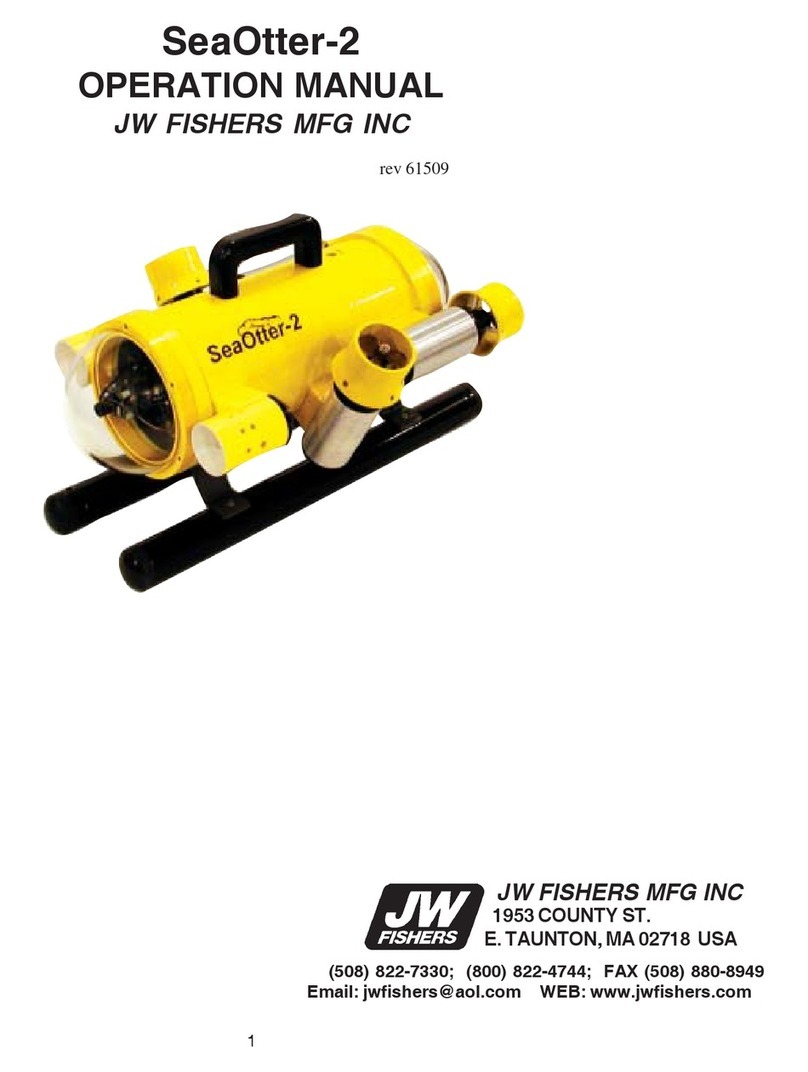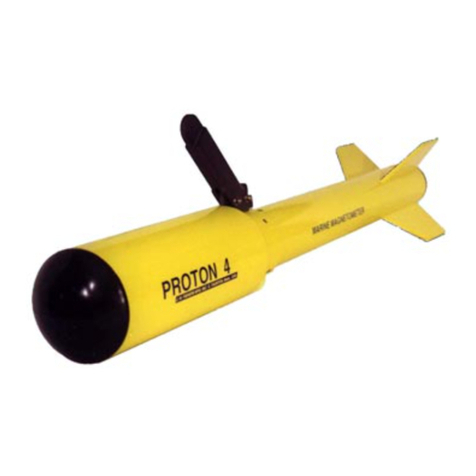
i
OPTIONS
SPECIFICATIONS
Extended operating life (longer housing for extra batteries).
Different frequencies available for SFP-1 (specify at time of order).
Carrying case (holds two pingers).
•
•
•
•
•
Frequency ................... 22, 32, 40, or 50kHz ........ 20 to 50kHz.
Power output (adj) ............. .1, .5, 2, 8w .................. .1, .5, 2, 5w.
Pulse length (adj) ................. 1, 3, 5ms ....................... 2, 3, 4ms.
Rep rate (adj) ..................... 2, 1, .5 sec .................. 2, 1, .5 sec.
Batteries (alkaline or lithium) ...... two 9 v ............................ two 9 v.
note: extended battery option adds four more batteries.
•
•
•
•
•
•
•
•
SFP-I MFP-1
Weight ............................... 20 oz air .......... negative 1 oz water.
Size ............................................................ 2.4 in dia x 9 in long.
extended batt option ....... 34 oz air .......... negative 2 oz water.
.............................. 2.4 in dia x 14 in long.
Material ............................................................. high impact PVC.
Color .................................................................................. yellow.
Depth rating ................................................................. 1,000 feet.
For both SFP-1 and MFP-1:
Battery life ......... from days to months depending on battery type
and output power.
note: extended battery option yields 3 times battery life.
•
16
MAINTENANCE
Your Pinger is constructed of corrosion resistant materials and was
designed to be maintenance free. However, as with most diving equip-
ment, it is recommended that it be rinsed in fresh water after use
and stored in a cool, dry place.
Protect the pinger transducer. Do not toss the pinger into a box
with other equipment. The transducer should be keep clean (soap
and water) and protected from damage.
If the unit is disassembled, the o-ring can be lubricated with a
silicon based lubricant.
When storing the pinger for more than a few weeks, the batteries
should be removed from the pinger.
LIMITED WARRANTY
Your Pinger underwent constant inspection during assembly to in-
sure many years of trouble free performance. The pinger is war-
ranted for TWO FULL YEARS from the date of purchase. During
this period your pinger will be repaired free of charge should a failure
occur due to materials or workmanship under normal use.
The warranty does not cover damage due to dropping or general
misuse. The warranty covers JW Fishers equipment only. JW Fish-
ers will not be liable outside of the remedies stated above.
Should service be required, write or phone us explaining the nature
of the problem, and we will provide shipping instructions. All repairs
are made at our factory. Repairs by unauthorized persons may void
the warranty.
RETURNING PINGER FOR REPAIR
If your pinger should need service, you can call, fax, write, or e-
8949 the factory for instructions. We do not require authorization for
the return of equipment. If you have a problem with your pinger and
would like to have it checked out at the factory, simply pack the
pinger well and return it with a brief note describing the problem.
Be sure to include your return address and telephone number on
the note. When returning equipment from outside of the US, to avoid
Custom problems when arriving in the USA, contact the factory for
specific instructions regarding shipping.





























